Tibet Museum Highlights: Must-See Exhibits for Culture Enthusiasts
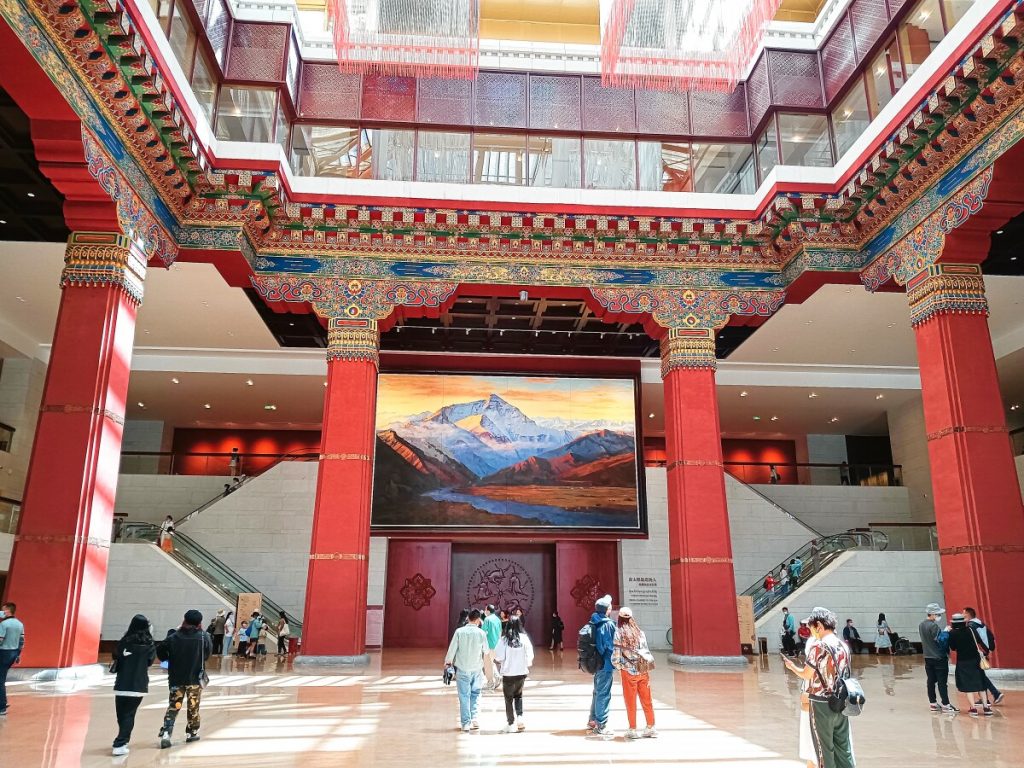
An Essential Guide to Visiting Tibet Museum
Nestled in the heart of Lhasa, the Tibet Museum stands as a monumental ode to the region’s rich cultural tapestry and tumultuous history. This architectural marvel, adorned with traditional Tibetan motifs, invites travelers from around the globe to delve into the unique heritage of Tibet. However, as you step inside, prepare for a complex narrative woven with both history and politics.
The museum showcases a diverse collection of artifacts that narrate the story of Tibetan culture, Buddhism, and the region’s integration into modern China. While many exhibits captivate with their beauty and significance, visitors should be mindful that the museum’s overarching narrative may reflect a particular ideological perspective. Engaging with the displays offers a chance to appreciate the artistry of Tibetan craftsmanship, yet it also demands a critical eye to discern the layers of meaning behind what is presented.
Whether you are an avid history buff or simply curious about this enigmatic land, the Tibet Museum promises a thought-provoking experience. It’s an opportunity not only to explore the wonders of Tibetan art and tradition but also to reflect on the complexities of identity and belonging in this breathtaking region. Prepare to embark on a journey through time, art, and culture, where every corner holds a story waiting to be uncovered.
In This Guide
- An Essential Guide to Visiting Tibet Museum
- The Rich History and Legends of Tibet Museum
- Main Highlights: What You Absolutely Can’t Miss
- Planning Your Visit: A Practical Guide
- Tickets: Prices, Booking, and Tips
- How to Get There: A Complete Transportation Guide
- Local Cuisine and Accommodation Nearby
- Frequently Asked Questions
- Final Thoughts on Your Trip
The Rich History and Legends of Tibet Museum
Nestled in the heart of Lhasa, the Tibet Museum stands as a testament to the complex tapestry of Tibetan culture, history, and the region’s rich spiritual heritage. Opened in 1999, this museum represents not just a repository of artifacts, but also an embodiment of the narratives that have shaped Tibet over centuries. As visitors step into its halls, they are greeted by an architectural marvel that reflects traditional Tibetan design, seamlessly blending with the surrounding landscape.
The museum’s collections span various themes, showcasing the profound spiritual roots of Tibetan Buddhism alongside the daily life and customs of its people. From intricate thangka paintings to ancient manuscripts, each exhibit tells a story—one of resilience, devotion, and a unique way of life that has withstood the test of time. Notably, the museum houses artifacts that trace back to the early Tibetan dynasties, highlighting the region’s historical significance along the Silk Road and its interactions with neighboring cultures.
However, the museum is not without its controversies. Some critics argue that it serves as a platform for political propaganda, emphasizing narratives that align with the Chinese government’s portrayal of Tibet’s history. This aspect of the museum has sparked debates among visitors, leading to a mixed reception. While many appreciate the cultural insights and artistic treasures on display, others voice concerns about the lack of comprehensive English descriptions and the perceived bias in the narrative presented.
Nevertheless, for those willing to delve into the curated exhibits, the Tibet Museum offers a profound glimpse into a land that is as enigmatic as it is beautiful. Every corner of the museum whispers tales of ancient legends and the enduring spirit of a people who continue to navigate the complexities of their identity in the modern world. Whether you are a history aficionado, a cultural explorer, or simply curious about Tibet, this museum invites you to embark on a journey through time, illuminating the rich heritage that defines this extraordinary region.
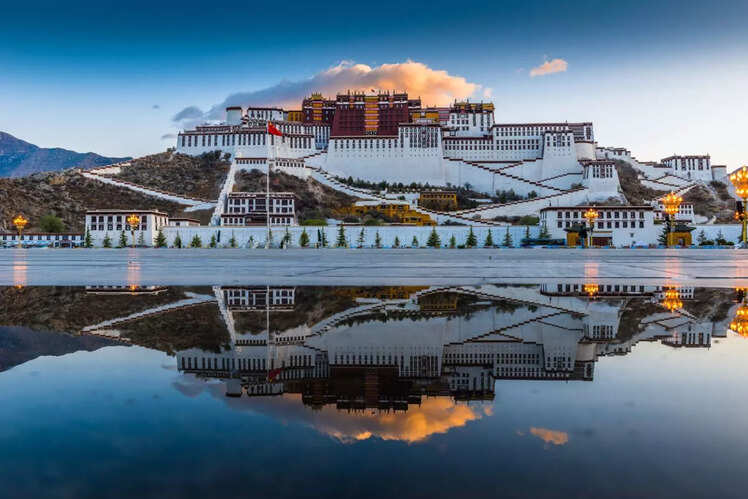
Tibet Museum.
Main Highlights: What You Absolutely Can’t Miss
Visiting the Tibet Museum in Lhasa is an experience that promises to immerse you in the unique and complex tapestry of Tibetan culture and history. While opinions about the museum may vary, there are several highlights that you simply cannot miss during your visit.
Architectural Marvel
Start your journey with the museum’s striking architecture. Designed to reflect traditional Tibetan styles, the building itself is a work of art. Its intricate details and sweeping lines create a visually stunning backdrop, setting the stage for the treasures that lie within.
Cultural Exhibits
The museum boasts an impressive collection of artifacts that showcase Tibetan history, art, and culture. From ancient Buddhist relics to traditional clothing, these exhibits offer a glimpse into the rich heritage of the Tibetan people. Take your time to explore the various sections dedicated to Tibetan Buddhism, including intricately carved statues and thangka paintings that illustrate spiritual narratives.
Unique Tibetan Treasures
Don’t miss the section featuring unique Tibetan handicrafts and antiques. This area highlights the craftsmanship of Tibetan artisans, showcasing items that are not only beautiful but also steeped in meaning and tradition. While some descriptions may lack English translations, the visual impact of the artifacts often tells their own story.
Educational Insights
For those willing to delve deeper, the museum offers a chance to learn about the socio-political landscape of Tibet. It provides insight into the region’s history through its exhibitions, although it is worth noting that some visitors feel the narrative presented may be influenced by contemporary political perspectives. Engage critically with the information, and use it as a springboard for further exploration of Tibetan history.
Surrounding Attractions
After your museum visit, take advantage of its proximity to other iconic Lhasa landmarks. The Potala Palace, a UNESCO World Heritage site, is just a short walk away, along with the vibrant Jokhang Temple and the bustling Barkhor Street. These sites complement your museum experience and offer a broader context of Tibetan culture.
Visitor Tips
- Plan Your Time: Allocate at least two to three hours to fully appreciate the exhibits.
- Check Opening Hours: The museum is open daily from 10:04 AM to 5:31 PM, so plan your visit accordingly.
- Be Prepared for Limited English: While some exhibits may not have English descriptions, a curious mind can still find plenty of beauty and intrigue in the displays.
In summary, the Tibet Museum is not just a repository of artifacts; it is a portal into the heart of Tibetan identity. Whether you’re an avid history buff or simply looking to understand more about this fascinating region, the museum promises an enriching experience that should be on every traveler’s itinerary.

Tibet Museum.
Planning Your Visit: A Practical Guide
Visiting the Tibet Museum can be a fascinating, albeit complex, experience for international travelers. Here’s everything you need to know to make the most of your visit.
Location and Getting There
The Tibet Museum is conveniently located at No.19 Luobulinka Road, Chengguan District, Lhasa 850000, China. It’s easily accessible from many of Lhasa’s major attractions, such as the Potala Palace and Jokhang Temple. Consider walking or taking a local taxi for a quick commute.
Opening Hours
Plan your visit accordingly, as the museum operates from 10:04 AM to 5:31 PM, seven days a week. Make sure to check for any holiday hours or special events that might affect access.
Admission Fees
While the museum primarily serves as a cultural and educational facility, it’s wise to inquire about any entry fees. These can change, so double-check upon arrival.
What to Expect
The Tibet Museum is known for its exhibitions that delve into Tibetan culture and history. However, visitors have noted a significant focus on promoting the narrative that Tibet is an integral part of China. This may come across as a mix of educational insights and political messaging. Here’s what you might find interesting:
- Cultural Exhibits: You’ll see a variety of artifacts, including items of Buddhist significance, historical documents, and multimedia presentations that explore Tibetan heritage.
- Language Limitations: Be prepared that many of the most captivating exhibits may lack English descriptions, which can make them less accessible for non-Chinese speakers. Currently, there are no English audio guides available.
Duration of Visit
Many visitors recommend allocating 2-3 hours to explore the museum fully. This time allows you to appreciate the diverse displays and perhaps engage in deeper reflection on the themes presented.
Nearby Attractions
After your visit, consider exploring these nearby highlights:
– Potala Palace: A UNESCO World Heritage site just a short walk away.
– Jokhang Temple: Another key cultural site, offering insight into Tibetan Buddhism.
– Barkhor Street: A bustling area perfect for shopping and experiencing local culture.
Dining Options
If you’re feeling hungry after your museum visit, there are several restaurants nearby offering a range of cuisines:
– Zimsahak Cafe: Known for its cozy atmosphere and delicious Asian dishes.
– Tibetan Family Kitchen: A great spot to sample authentic Tibetan cuisine.
Tips for Visitors
- Be Mindful of Sensitivities: Given the political context surrounding Tibet, approach discussions about the museum and its content with care, especially if talking with locals.
- Take Notes: If you’re keen on absorbing the information that may not be presented in English, consider jotting down your observations or using translation apps to assist you during your visit.
- Visit Early or Late: To avoid crowds, try to arrive shortly after opening or closer to closing time.
Final Thoughts
The Tibet Museum offers a unique window into the region’s rich tapestry of culture and history, though it is essential to remain aware of the broader political narratives at play. Engaging with this museum can be a meaningful part of your journey in Tibet, providing you with a deeper understanding of its heritage and contemporary issues. Enjoy your visit!
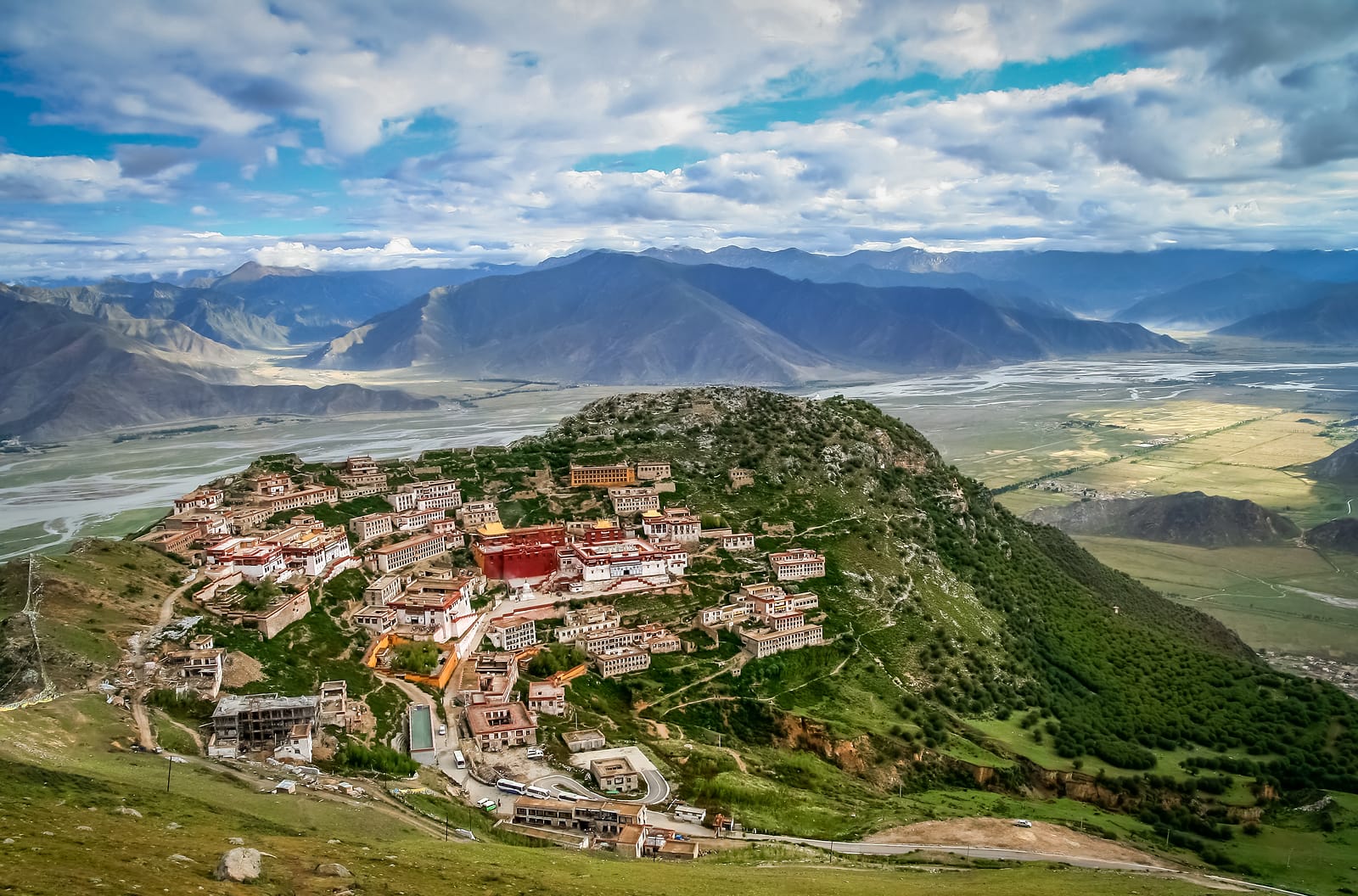
Tibet Museum.
Tickets: Prices, Booking, and Tips
Visiting the Tibet Museum (西藏博物馆) in Lhasa can be an enriching experience, offering insights into Tibetan culture and history, albeit through a lens that some may find politically charged. Here’s everything you need to know about ticket prices, booking options, and some handy tips to enhance your visit.
Ticket Prices
Entry to the Tibet Museum is quite affordable, with general admission typically priced at around 30 CNY (approximately $4 USD). Please note that prices may vary slightly depending on seasonal changes or special exhibitions, so it’s a good idea to confirm any updates on the museum’s official website or through local tourism boards.
Booking Your Visit
While tickets can often be purchased on-site, especially during off-peak hours, it is advisable to book in advance during peak tourist seasons or for any special exhibitions to avoid long queues. Many travelers recommend checking with local tour operators, as they may offer combined packages that include museum entry along with guided tours of other significant attractions in Lhasa.
Opening Hours
The museum is open daily from 10:04 AM to 5:31 PM. It is advisable to arrive at least a couple of hours before closing time to fully appreciate the exhibits. Plan your visit accordingly, as the museum can take anywhere from two to three hours to explore, especially if you are keen on delving into the intricacies of the displays.
Tips for Your Visit
-
Language Barrier: Be prepared for limited English descriptions throughout the museum. Consider downloading translation apps or bringing a phrasebook to help you navigate the exhibits.
-
Audio Guides: Currently, there are no English audio guides available, so reading up on Tibetan history before your visit could enhance your understanding and appreciation of the displays.
-
Focus on Key Exhibits: While the museum presents a variety of artifacts, some visitors find that the most captivating pieces lack English descriptions. Therefore, prioritize exhibits that you find intriguing and do a bit of research beforehand.
-
Combine with Other Attractions: The Tibet Museum is conveniently located near other major sites like the Potala Palace and Jokhang Temple. Consider planning your itinerary to explore several landmarks in one day.
-
Mind the Cultural Context: Be aware that some visitors describe the museum as politically motivated, which may color the presentation of Tibetan history. Keeping an open mind and approaching the exhibits critically can make for a more enriching experience.
In summary, while the Tibet Museum offers a unique glimpse into the rich tapestry of Tibetan heritage, being informed and prepared will help you navigate its complexities and make the most of your visit.
How to Get There: A Complete Transportation Guide
Reaching the Tibet Museum (西藏博物馆) in Lhasa is a journey that can be as enriching as the destination itself. Nestled in the heart of the city, the museum is easily accessible via various modes of transportation, catering to both local and international travelers. Here’s how to navigate your way there:
Arriving by Air
Lhasa Gonggar Airport (LXA) is the primary gateway for international visitors flying into Tibet. Upon arrival:
- Airport Transfer:
- Taxi: The most convenient option. Taxis are available outside the terminal, and the journey to the museum takes about 60 minutes, costing approximately 200-300 CNY (RMB). Ensure the driver understands your destination.
- Airport Shuttle: There are shuttle buses that run to various points in Lhasa, but they may not drop you off directly at the museum. Check the latest schedules upon arrival.
Traveling by Train
If you prefer traveling by train, the Lhasa Railway Station offers breathtaking views along the way. Once you arrive:
- Taxi: It’s about a 15-minute drive to Tibet Museum. Taxis are readily available outside the station.
- Public Bus: Buses run from the train station to various parts of the city, including routes that can take you near the museum. Look for bus numbers 1 and 2.
Getting Around Lhasa
Once in Lhasa, there are several options to reach the museum:
-
Walking: If you’re staying nearby, the Tibet Museum is approximately a 20-minute walk from the Potala Palace, one of Lhasa’s major attractions. The route is straightforward and offers scenic views of the city.
-
Taxi: Taxis in Lhasa are inexpensive and a convenient option for tourists. Just show the driver the address: No.19 Luobulinka Road, Chengguan District.
-
Public Buses:
- The public bus network can also be a cost-effective way to travel. Look for routes that stop near the museum. Bus fare is generally very low (around 2 CNY).
Nearby Attractions
While visiting the Tibet Museum, consider exploring the surrounding area. The Potala Palace is a short distance away, making it easy to combine your visit with other cultural sites. Many travelers also enjoy stopping by the Jokhang Temple and Barkhor Street, which are both within walking distance.
Tips for International Travelers
- Language: While many locals speak basic Mandarin, English may not be widely understood. Having the address written in Chinese can be helpful.
- Altitude: Lhasa is at a high altitude (3,650 meters or 11,975 feet). Allow yourself time to acclimatize, especially if arriving from lower altitudes.
- Opening Hours: The museum is open from 10:04 AM to 5:31 PM daily. Plan your visit accordingly to make the most of your time there.
With these transportation options at your disposal, reaching the Tibet Museum will be a seamless part of your Tibetan adventure! Enjoy the journey and the rich cultural tapestry that awaits you within the museum’s walls.
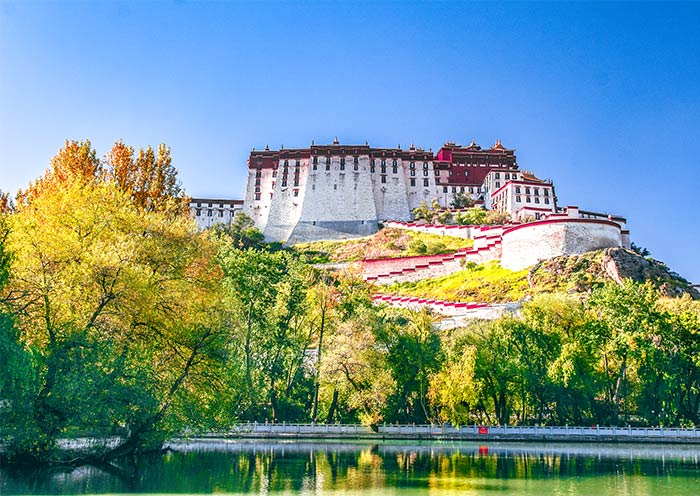
Tibet Museum.
Local Cuisine and Accommodation Nearby
Visiting the Tibet Museum offers an intriguing glimpse into the region’s history and culture, but your experience in Lhasa shouldn’t end there. The area surrounding the museum is brimming with delightful dining options and comfortable accommodations to enhance your journey.
Culinary Delights
When it comes to savoring Tibetan cuisine, you have some wonderful choices nearby:
-
Tibetan Family Kitchen (Approx. 1.8 miles away): This highly-rated eatery is a must-visit for authentic Tibetan dishes. With its cozy atmosphere and vegetarian-friendly options, it’s perfect for those looking to indulge in local flavors. Be sure to try the momos (dumplings) and thukpa (noodle soup).
-
XiZang NiuPai Restaurant (Approx. 0.5 miles away): Known for its fast food offerings with a Tibetan twist, this restaurant is great for a quick meal. Their beef dishes are particularly popular among locals and visitors alike.
-
Lhasa Java Coffee (Approx. 0.6 miles away): If you’re in the mood for something more international, this café serves excellent Italian coffee alongside a selection of pastries and light meals. It’s a perfect spot to relax after a day of exploring.
-
Hu SiChuanCai (Approx. 0.7 miles away): For those who enjoy spicy flavors, this Sichuan-style restaurant offers a tantalizing array of dishes that will surely excite your palate.
Comfortable Stays
To ensure a restful night after your museum visit, consider these nearby accommodations:
-
Tibet Hotel Lhasa (Approx. 1 mile away): This hotel offers a blend of modern comfort and traditional Tibetan hospitality. With amenities like a fitness center, restaurant, and spacious rooms, it’s a great base for exploring Lhasa.
-
Yaluzangbu Hotel (Approx. 0.8 miles away): Situated conveniently close to the museum, this hotel features comfortable rooms and a restaurant serving local cuisine. The friendly staff is always ready to assist with travel arrangements.
-
Barkhor Gtsang Hotel (Approx. 1.5 miles away): A charming option located near the bustling Barkhor Street, this hotel provides easy access to various attractions. Its cozy rooms and friendly atmosphere make it a favorite among travelers.
After a day of immersing yourself in the cultural treasures of the Tibet Museum, these dining and accommodation options will help you create a well-rounded travel experience in Lhasa. Enjoy the rich flavors and warm hospitality that this unique region has to offer!
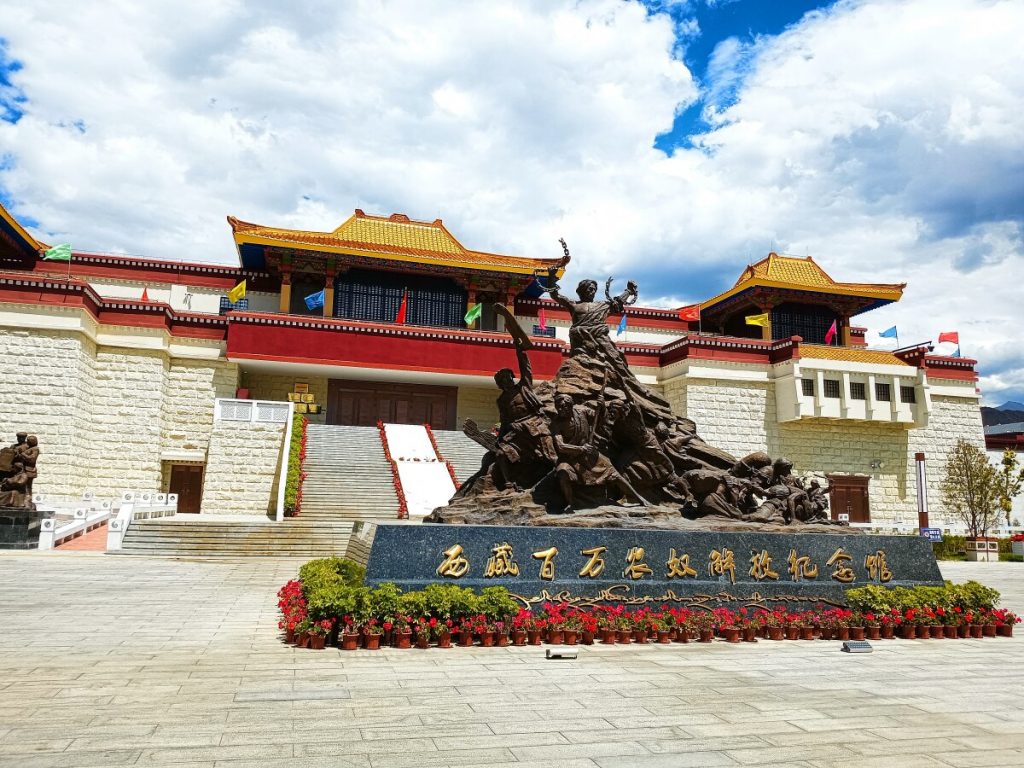
Tibet Museum.
Frequently Asked Questions
Frequently Asked Questions about Tibet Museum
1. What are the opening hours of the Tibet Museum?
The Tibet Museum is open daily from 10:04 AM to 5:31 PM. It is advisable to check for any holiday closures before your visit.
2. Is there an admission fee to enter the museum?
Yes, there is an admission fee to enter the Tibet Museum. Prices may vary, so it’s best to confirm the current rates at the entrance or on the official website prior to your visit.
3. Are there English descriptions or audio guides available for exhibits?
Unfortunately, many of the exhibits at the Tibet Museum do not have English descriptions, and there is no English audio guide available. Visitors who do not speak Mandarin may find it challenging to fully appreciate some of the displays.
4. What type of exhibits can I expect to see at the museum?
The museum features a variety of exhibits on Tibetan culture, history, and Buddhism. While some displays are intriguing, be aware that many reviews describe the museum as having a strong propaganda focus on Tibetan history from the perspective of the Chinese government.
5. How long should I plan to spend at the Tibet Museum?
Most visitors recommend spending about two to three hours to explore the museum thoroughly. This allows you to engage with the exhibits and take your time appreciating the artifacts.
6. Is the Tibet Museum suitable for children and families?
Yes, the Tibet Museum can be a suitable outing for families. Children may enjoy the cultural artifacts and traditional displays; however, parents should be prepared to explain some of the historical context.
7. What are some nearby attractions I can visit after the museum?
The museum is conveniently located near other attractions in Lhasa, such as the Potala Palace, Jokhang Temple, and Norbulingka. These sites can be easily included in your itinerary for a fuller experience of Tibetan culture.
8. How do I get to the Tibet Museum from the city center?
The Tibet Museum is situated at No.19 Luobulinka Road in the Chengguan District of Lhasa. Depending on your location, you can reach the museum by taxi, public bus, or even by walking if you are nearby. It’s always a good idea to have the address written in Mandarin to show to taxi drivers.
Final Thoughts on Your Trip
Visiting the Tibet Museum is an experience that invites you to delve deep into the intricate tapestry of Tibetan history and culture, albeit through a lens that is often contested. While some may find the museum’s narrative to be one-sided or propagandistic, it undeniably offers a unique opportunity to engage with the region’s rich heritage, art, and traditions.
As you explore the exhibits, take a moment to reflect on the diverse perspectives surrounding Tibet’s past and present. Whether you find yourself enamored by the exquisite artifacts or challenged by the museum’s context, your visit will surely enrich your understanding of this extraordinary land.
Ultimately, the Tibet Museum serves as a reminder of the complexities of cultural representation and the importance of preserving history. As you walk away, carry with you the stories and sentiments that resonate, and allow them to inform your journey through this magical region of the world. Safe travels and may your adventures in Tibet be filled with discovery and wonder!